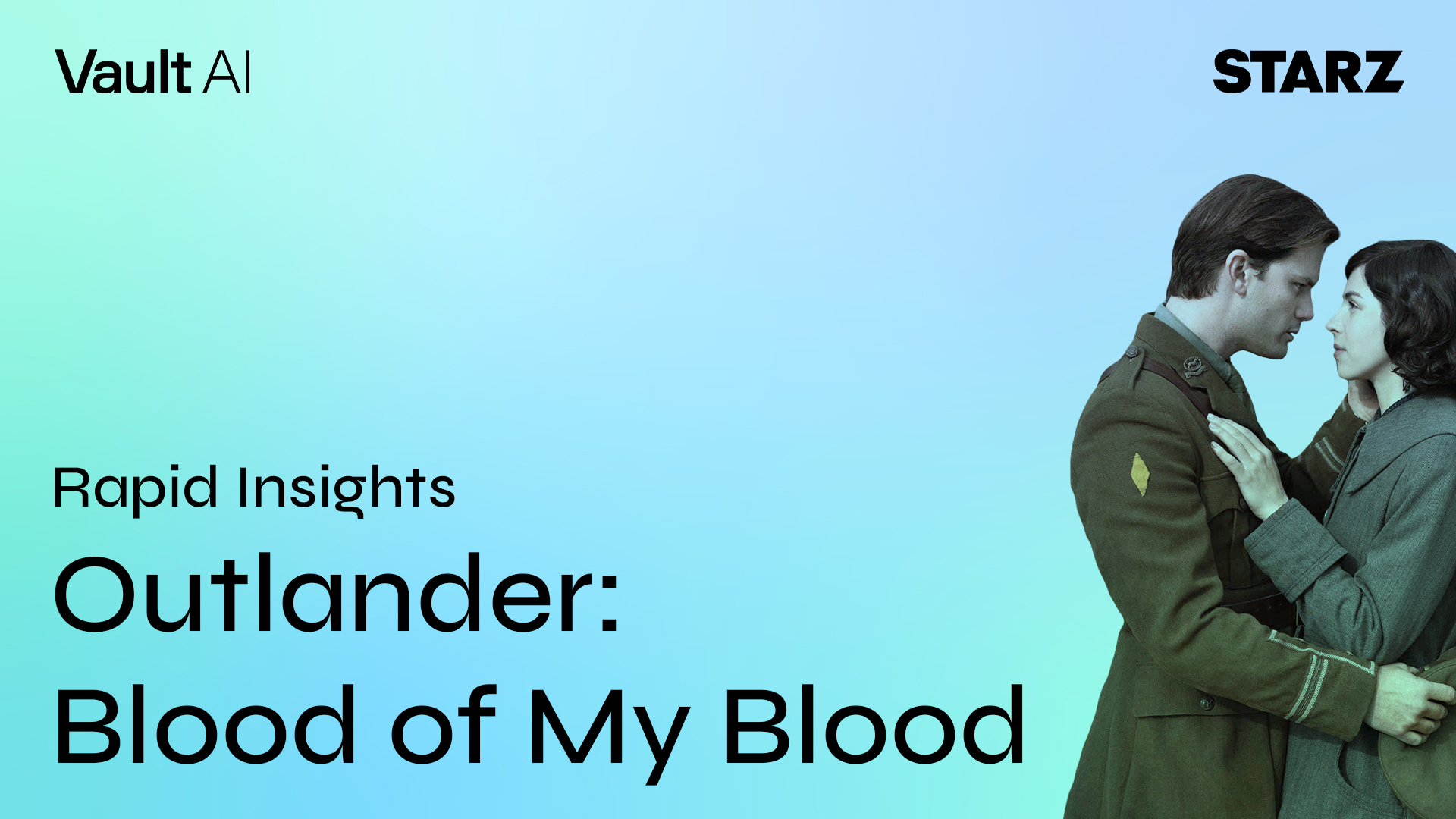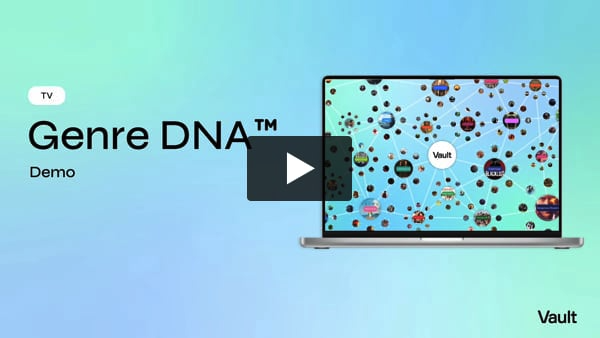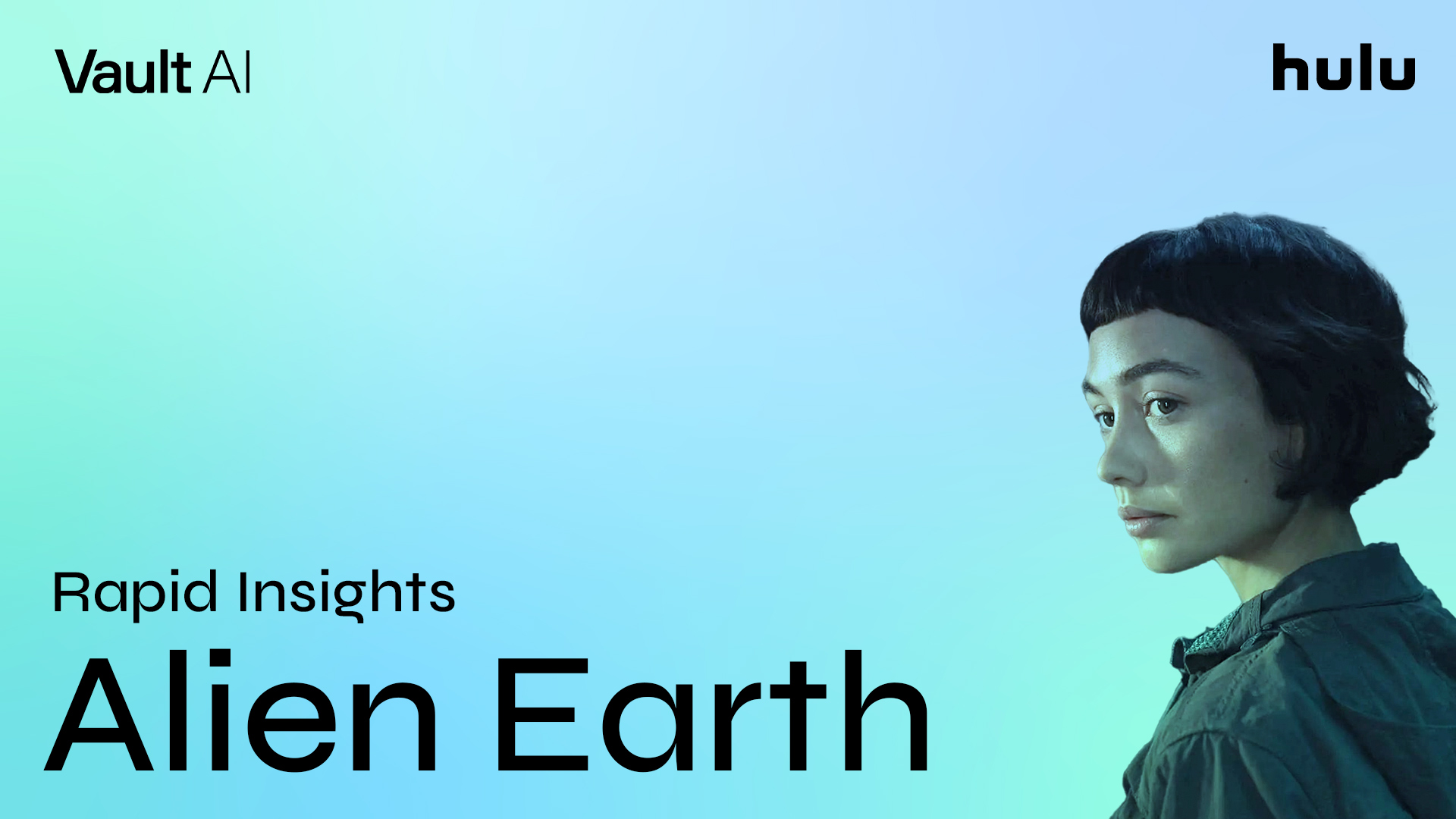Starz recently debuted a compelling spin-off to its historical romance drama Outlander that’s so promising it’s already been renewed for a second season. This new show serves as a prequel to the original series, tracing how the parents of Outlander’s storied couple originally came together–one pair in 18th century Scotland, the other in WWI-era England.
Here’s what you need to know about Outlander: Blood of My Blood:
Vault AI uses index scores to describe the impact a given story/theme/element will have on specific KPIs:
≤79 Disappointing 80-89 Challenging 90-109 Average 110-119 Promising 120+ Outstanding
Is the same Outlander audience watching this new spin-off?
Definitely. For Blood of My Blood, we’re seeing a viewership that skews heavily toward women (64%) and those 35+ (96%)–a near exact match for the original Outlander (65% women / 91% aged 35+). This audience profile fits much more closely with other romance-forward dramas like Bridgerton, When Calls the Heart, and Virgin River than period-piece sagas like Game of Thrones, Vikings, The White Queen, or The Tudors, which tend to be more gender-balanced.
What is this new prequel carrying over from the original Outlander?
An epic love story that crosses time. Blood of My Blood follows in its predecessor’s footsteps by transporting a disoriented English character from the mid-20th century into 18th-century Scotland through a formation of mystical standing stones (Time Travel, 129). Both shows then delve into the ins and outs of the complex Scottish clan dynamics of the period (Family Relationships, 129) while its lead characters fight against terrible odds to stay together (Falling in Love, 118). However, while Outlander tracks only one pair (Claire and Jamie), Blood of My Blood follows two–their parents: after producing Claire, a very-much-in-love married English couple must move heaven and earth to find each other again after passing through the stones, all while inadvertently helping Jamie’s Scottish parents to meet and fall in love for the first time. These basic bones of such a timeless story are top viewership drivers for both series.
What’s different from the original Outlander?
The IP’s trappings are now table stakes. In addition to its core love story, Outlander’s popularity originally hinged on its fascinating depiction of a brutal era in Scottish history (British Culture, 121; Non-US Setting, 127) as well as its deliciously spicy (Sexual Activity, 114) adaptation of a blockbuster romance novel (Based on a Book, 114); all four of these key drivers were crucial to the show’s success, particularly its longevity. While these elements are equally present in Blood of My Blood, however, they no longer appear in the spin-off’s list of top drivers, suggesting pre-set viewer expectations. Fans already know the prequel will give them exactly what they want in terms of setting and sex, and so they’re no longer the draws they once were; audiences instead may be looking for Blood of My Blood to distinguish itself in a different way.
What’s helping to distinguish Blood of My Blood as its own show?
Action and intensity. While Outlander’s first season offered up plenty of stressful violence to offset its sweet romance, the Scary Situations (130) in its prequel are more immediately prominent from the very first episode, driving both ratings and bingeability in a way they didn’t for the original series. Blood of My Blood opens on a period of warfare in two eras: the bombs and mustard gas of WWI and a bitter, bloody Rivalry (116) between Scottish clans in 1714. Larger scenes of Battle Action (121) as well as the everyday life-or-death dangers (Life in Danger, 121) inherent to the era–especially when one core couple comes from warring clans, Romeo and Juliet-style–is creating an especially tense emotional ride characterized by Vigilance (123), Anger (120), Terror (112), and Fear (111). The English couple’s desperate attempts to reunite in a strange land and era (A Missing Loved One, 117) add an original twist to the suspense as well; while Jamie’s Scottish family history is described in the Outlander novels, Claire’s parents’ story is new for the TV shows.
How is the new show’s social tracking?
Stellar. Online activity for Blood of My Blood jumped to an “outstanding” level (peaking at 137) with its mid-July trailer drop, then rose again in the two weeks leading up to its early August premiere. The show ultimately maxed out our buzz meter (at 160) and now continues to hover near the top of the range. Outlander saw a parallel rise in chatter at the exact same time, likely spurred by fans comparing the established canon and characters of the original series to those in the new prequel.
—
Most Popular Rapid Insights
Redefine your understanding of TV subgenres
Introducing Genre DNA™ – TV subgenres redefined by groundbreaking AI analysis to reveal the true drivers of viewership.
See the insights that others can’t
Genre DNA™ goes beyond traditional TV genre classifications by analyzing over 1,000 scripted and unscripted series on both linear and SVOD platforms from the last 5 years.
Each Vault Genre DNA™ report offers a precise analysis of your chosen TV subgenre, uncovering its unique drivers of viewership.
*Publicly released trailers for series are evaluated using Vault’s algorithms – utilizing our proprietary 120K+ story element database alongside viewership performance and other datasets – to identify unique combinations of stories, themes, characters, and genre elements that will drive success.




